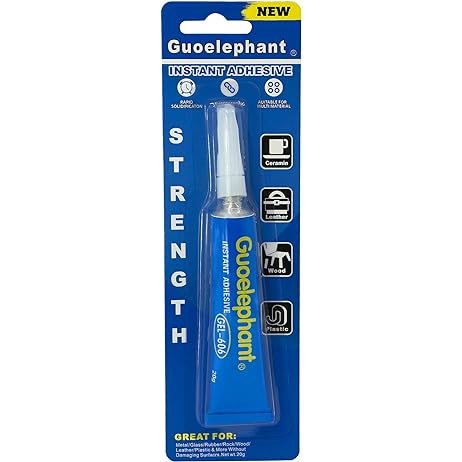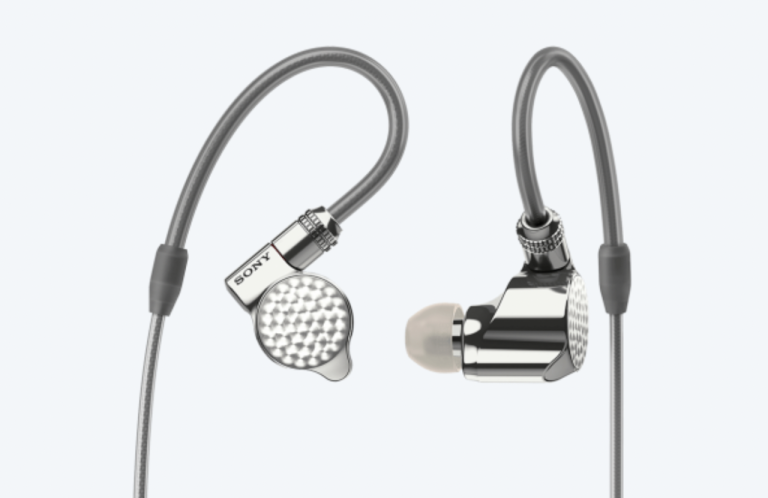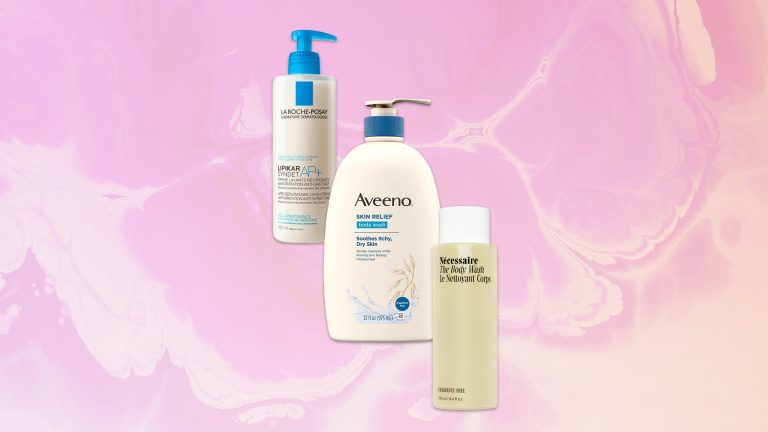9 Best Glue for Ceramic: Top Adhesives for All Your Repair Needs
Fixing a broken ceramic piece can feel like a daunting task, but with the right glue, you can restore your treasured items to their former glory. Whether it’s a beloved vase, a favorite mug, or a decorative plate, finding the best adhesive is crucial for a seamless repair.
In this guide, you’ll discover the top 9 glues for ceramic, carefully selected for their strength, ease of use, and durability. Say goodbye to frustration and hello to flawless fixes with these expert-recommended options. Dive in to find the perfect solution for your ceramic repair needs.
1. Epoxy Resin Glue: The Strong Bond
Epoxy resin glue stands out for its exceptional bonding strength and durability, making it a top choice for ceramic repairs. Here’s what you need to know about its features and best use cases.
Features of Epoxy Resin Glue
- Strong Bond: Epoxy resin forms a robust bond that can withstand stress and pressure, ideal for ceramic items.
- Water-Resistant: This glue is water-resistant, ensuring your ceramic pieces can endure exposure to moisture.
- Heat Resistance: With its high heat tolerance, epoxy is perfect for ceramics that might be exposed to varying temperatures.
- Two-Part Formula: Typically, epoxy resin glue involves a two-part mixing process, comprising resin and hardener, which ensures a reliable bond.
- Versatile: Works not just on ceramics, but also on metals, glass, and plastics, adding to its versatility.
- Heavy Ceramic Items: Use epoxy resin for mending heavy ceramics like large vases or pottery that require strong adhesion.
- Outdoor Decorations: Ideal for outdoor ceramic decorations which face the elements, thanks to its water-resistant property.
- Kitchenware Repairs: Perfect for fixing ceramic kitchen items like mugs or plates that might come into contact with hot substances.
- Decorative Ceramics: Apply it for decorative pieces that may undergo occasional handling, ensuring they stay intact.
- Art Projects: Great for ceramic art pieces where both durability and aesthetic integrity are crucial.
Epoxy resin glue redefines ceramic repairs with its unmatched strength and reliability, making it a go-to for various applications.
2. Super Glue: Quick Fix Solution
When you need to repair a ceramic item quickly, super glue is your go-to adhesive. It’s perfect for small repairs and provides an instant bond.
Advantages of Using Super Glue
- Instant Bond: Super glue creates an immediate bond, saving you time on minor ceramic repairs.
- Ease of Use: Applying super glue is straightforward. Just a few drops will do the trick without any complex mixing.
- Precision: The pinpoint applicator allows you to apply glue precisely, making it ideal for delicate ceramic pieces.
- Versatility: Super glue works not just on ceramics but also on various materials like metal, plastic, and wood.
- Cost-Effective: It’s generally inexpensive, so you won’t break the bank for quick fixes.
- Chipped Mugs: Use super glue to quickly fix small chips on your favorite coffee mugs.
- Decorative Plates: It bonds delicate pieces back together seamlessly.
- Figurines: Repair tiny decorative figurines with precision and ease.
- Cracked Tiles: Super glue can temporarily fix cracked ceramic tiles until a more permanent solution is applied.
- Handle Fixes: Use it to reattach broken handles on lightweight ceramic items.
3. Silicone Adhesive: Waterproof and Flexible
Silicone adhesive is known for its waterproof properties and flexibility, making it a great choice for certain ceramic repairs.
Benefits of Silicone Adhesive
Silicone adhesive offers several benefits when used on ceramics. First, it’s waterproof, so it won’t break down when exposed to moisture, making it ideal for ceramic items frequently subjected to water. Second, its flexibility allows it to absorb shocks and vibrations, reducing the risk of re-cracking. Third, it’s heat-resistant, withstanding temperatures up to 400°F, which is perfect for items like kitchenware. Additionally, silicone adhesive is easy to apply and cures at room temperature, ensuring a strong bond without the need for special equipment.
When to Use Silicone on Ceramics
Use silicone adhesive on ceramic items that require flexibility and water resistance. Sealing a cracked flower pot, mending bathroom tiles, or fixing a leaking ceramic water fixture are perfect scenarios for this adhesive. It’s also a good option for outdoor ceramic decorations subjected to varying weather conditions. Due to its high-temperature tolerance, it’s suitable for repairing kitchenware like oven-safe dishes and pots. Avoid using silicone adhesive for fine or intricate repairs where precision bonding is necessary, as it may not provide the rigid hold required for delicate ceramic pieces.
4. Polyurethane Glue: Versatile and Durable
Polyurethane glue stands out due to its exceptional versatility and lasting durability.
Qualities of Polyurethane Glue
Polyurethane glue provides excellent bonding strength. It expands as it cures, filling gaps and ensuring a tight bond. This glue is water-resistant, making it suitable for both indoor and outdoor projects. It’s also resistant to heat and chemicals, ensuring a durable hold under various conditions. However, you’ll need to clamp the pieces together while it sets, which can take a few hours.
Recommended Applications for Ceramics
Use polyurethane glue for repairing ceramic items exposed to moisture and temperature changes, like garden ornaments and outdoor planters. It’s perfect for fixing broken ceramics that require a strong, lasting bond. Ideal for larger ceramic pieces, it ensures gaps are filled and the bond withstands various environmental factors.
5. Cyanoacrylate Glue: For Small Chips and Cracks
Cyanoacrylate glue, commonly known as super glue, is ideal for minor ceramic repairs. It forms an instant, strong bond, perfect for small chips and cracks.
Understanding Cyanoacrylate Adhesive
Cyanoacrylate adhesive sets quickly on contact with a tiny amount of moisture. This glue forms a rigid, clear bond, making it unobtrusive on visible parts of ceramics. With its ability to bond multiple surfaces, cyanoacrylate is versatile but most effective on non-porous materials like ceramics. Ensure surfaces are clean and dry for the best adhesion.
Appropriate Ceramic Fixes with Cyanoacrylate
Use cyanoacrylate glue for small ceramic repairs. It’s perfect for fixing chipped edges on coffee mugs, hairline cracks in decorative plates, or minor breaks in figurines. Apply a small amount of glue to one side, press the pieces together, and hold for a few seconds. Avoid over-application to prevent unsightly glue overflow.
6. PVA Glue: Eco-Friendly Choice
PVA glue, or polyvinyl acetate, is a popular adhesive known for its non-toxic, water-based formula. It’s an excellent choice for those looking for an environmentally friendly option.
Features of PVA Glue
PVA glue stands out for its eco-friendly properties. It’s non-toxic, making it safe for use around children and pets. It’s also water-soluble, meaning you can easily clean up any spills with just soap and water. Another key feature is flexibility; when dry, PVA glue forms a strong yet flexible bond, accommodating slight movements in your ceramic projects. Because it’s water-based, it doesn’t emit harmful fumes, enhancing indoor air quality.
Best Ceramics Projects for PVA Glue
PVA glue is ideal for light ceramic crafts and decorative pieces. You can use it to attach ceramics to porous surfaces like wood or fabric, making it perfect for mixed media projects. It’s also handy for assembling intricate ceramic mosaics, where precision and a clear, non-staining adhesive are crucial. However, it’s best suited for indoor projects since PVA glue is not waterproof.
7. Contact Cement: For a Permanent, Flexible Bond
Why Choose Contact Cement for Ceramics
Contact cement forms a permanent, flexible bond that’s ideal for ceramic projects. This adhesive is resistant to heat and moisture, ensuring your pieces stay intact even in challenging environments. It allows for repositioning before setting, giving you precision in your work. Unlike other glues, contact cement doesn’t shrink as it dries, maintaining a consistent bond.
Suitable Ceramic Projects for Contact Cement
Use contact cement for large ceramic tiles and mosaics where flexibility is crucial. It’s excellent for bonding ceramics to various surfaces such as wood or metal, making it versatile for mixed-material projects. Repair ceramic fixtures like sinks and countertops, where durability and resistance to heat and moisture are essential. Choose contact cement for outdoor ceramic art installations to withstand weather changes.
8. Two-Part Acrylic Glue: Strong and Non-Toxic
Benefits of Acrylic Glue
Two-part acrylic glue creates a robust, long-lasting bond. It’s non-toxic, making it safer for use compared to many other adhesives. Acrylic glue is resistant to various environmental factors, including moisture and temperature fluctuations, ensuring durability in both indoor and outdoor settings. This glue also cures quickly, which can be beneficial for projects that require immediate handling.
Ceramic Applications Best Suited for Acrylic Glue
Use two-part acrylic glue for intricate ceramic projects. It’s ideal for repairing fine china, decorative ceramics, and ceramic jewelry due to its precise application and strong bond. This glue is also excellent for ceramic-to-metal bonding, making it suitable for mixed-material crafts or repairs. Additionally, it’s a good choice for mounting ceramic tiles in areas prone to moisture, like bathrooms.
9. Hot Glue: A Temporary Option
Hot glue provides a quick fix for ceramic repairs, especially when you don’t need a permanent solution. It’s versatile and easily available.
Overview of Hot Glue Benefits
Hot glue sets quickly, reducing waiting times. It’s also relatively easy to apply and control, making it suitable for simple repairs. The glue is versatile, adhering to a variety of surfaces, including ceramic, wood, and some plastics. Since it’s easily removable, it’s perfect for temporary fixes.
When to Use Hot Glue on Ceramics
Use hot glue when you require a temporary bond, such as in craft projects or while you’re preparing for a more permanent fix. It works well for assembling pieces that need quick positioning. However, avoid using it for heavy-duty repairs or items exposed to water or heat, as hot glue lacks durability for such conditions.
Conclusion: Choosing the Best Glue for Your Ceramic Needs
Selecting the right glue for your ceramic project depends on the specific requirements of the repair. Whether you’re dealing with a minor crack or a significant break, there’s an adhesive that fits your needs. For quick fixes or craft projects, hot glue offers convenience and speed. However, for more durable and long-lasting repairs, consider options like epoxy resin or cyanoacrylate glue.
Remember to assess factors such as the ceramic’s exposure to water and heat, the bond strength required, and the ease of application. By understanding these elements, you’ll ensure a successful and lasting repair, keeping your ceramic items in top condition.






